If you had to guess, what type of supplement would you say is most popular?…
TOC
Lose Weight With S.M.A.R.T. Goals!
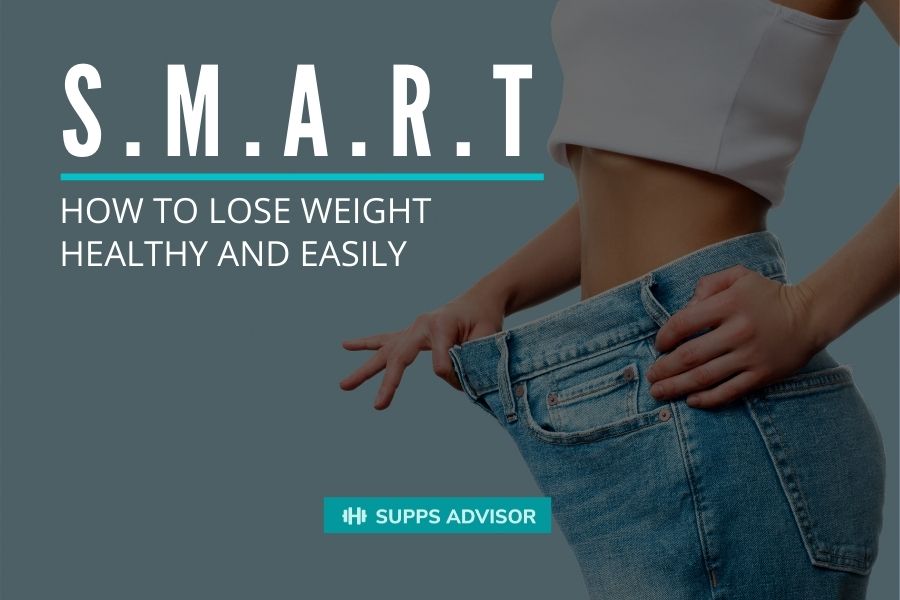
01/30/2020 · 11 min reading
I still vividly remember the day that I found out my father had a heart attack. My heart dropped when the doctor stated that this heart attack was due to my father’s lifestyle.
I knew then and there that his weight was part of the issue. Shortly afterward, I stopped in my tracks as I walked past the mirror. I suddenly realized that I was next if I didn’t change.

Determining and Writing Down Your Goals
This article will focus on how to lose weight, how to slim down, and how to cut properly.
That said, let’s face it: you won’t get very far without a clear view of your goals. If you’re stuck on how to set attainable goals, here are some tips.
S.M.A.R.T Goals
So what are these S.M.A.R.T goals 5? Here’s what each letter stands for.
S- Specific. Saying “I want to lose weight,” is a vague goal. This statement leaves a lot of wiggle room, leaving you open to failure. You may decide to stretch it out as long as possible rather than achieving it now or forget about it. You may have no set goal for how much weight you want to lose. With specific goals, you can hold yourself accountable by saying, “I want _ pounds of weight loss in _ amount of time.”
M- Measurable. This part helps you dive further into your specifics. You want to be able to determine if you have reached your goal. Specify the number of pounds, body composition measurements, or blood test level goals.
A- Achievable. Your goals must be realistic. Failure is inevitable if you go too far. You will not be a professional athlete in a month. You will not have the composition of a bodybuilder in 6 months. There is nothing wrong with hoping to achieve those goals but split it up into achievable chunks.
R- Relevant. Your goals should be your own. You do not have to reach goals that other people think you should achieve. Make your goals relevant to your true desires and the focus on your weight loss.
T- Time-Bound. Give yourself a time frame. Giving yourself a deadline will hold you accountable for reaching it. This way, you don’t leave yourself open to slacking for as long as possible.
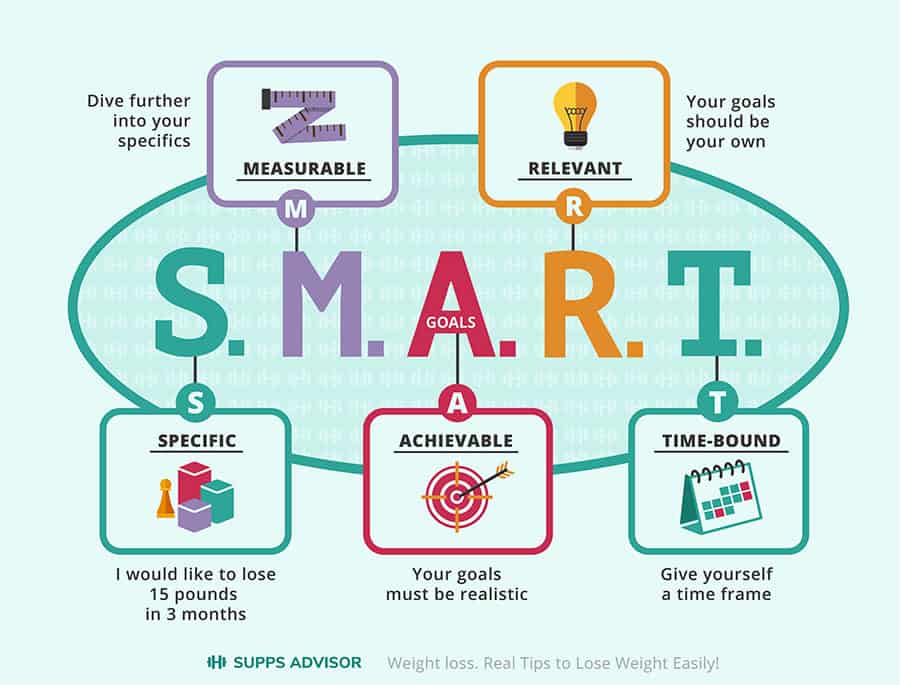
Examples of Good Goal Statements
Here are some examples of reasonable, specific goals.
“I want to have a BMI 12 of 24 within 4 months.”
“I would like to lose 15 pounds in 3 months.”
“I want to fit in size 6 pants in 8 months.”
Put Your Goals and Benefits in Sight
Whichever way you prefer, one great way to keep your goals in mind is to keep them in your sight. You might prefer to write your goals down and keep it somewhere that they will see it throughout the day. For example, hang your written goals on the fridge or at your desk.
Other people often use vision boards 8. These project boards usually contain inspirational photos, quotes, or other motivational visuals. You can craft these as elaborately as you prefer. Your board needs to keep your attention and continue motivating you.
Importance of Motivation and Consistency
Keeping yourself motivated will prevent you from giving up. Trust me when I say that you will likely consider giving up at some point. You will get tired and sore. You will crave your sugary foods. You will get impatient if you don’t see results rapidly. Staying motivated lessens the risk of quitting on yourself.
Do you know Sir Isaac Newton’s first law of motion 2? An object in motion keeps moving. An object at rest remains resting. This pattern continues unless an outside force interrupts it. This law is where consistency comes into the picture.
You begin by finding the reason, aka the outside force, that launches you into motion. Once you are in motion, you must not allow other external forces to interrupt your motion. Consistency is key to this. If you allow yourself to slip away from your plan, you will find yourself at rest and end up staying at rest.

Possible Benefits of Weight Loss
Understanding the benefits of losing weight can further propel you into your journey. Let’s start with some of the most important reasons.
One of the most critical benefits of weight loss includes a major impact on health 4. Your blood pressure and harmful cholesterol levels go down. Weight loss decreases the risk of heart disease, diabetes, and stroke. Joint and back pain can improve when they are supporting less weight.
Another motivating factor behind weight loss is the desire to look better. You should always feel beautiful, but you may want to boost your confidence. Slimming down may help you feel more comfortable in your own skin, and there’s nothing wrong with that!
Although it may sound exhausting, regular exercise increases energy 9. When you begin an activity that requires a lot of energy, your body releases a hormone to provide energy. Once you finish exercising, some of those hormones remain. Increasing heart health through exercise reduces the stress on your heart. Performing daily activities doesn’t exhaust your body as much when your heart can keep up.
When you begin learning to set goals and remain consistent, it tends to spread to other areas of your life. The self-discipline that weight loss requires will teach you self-discipline in different regions. Every part of your life benefits from setting goals and following a routine.
You will impact so many areas of your life by committing to weight loss!
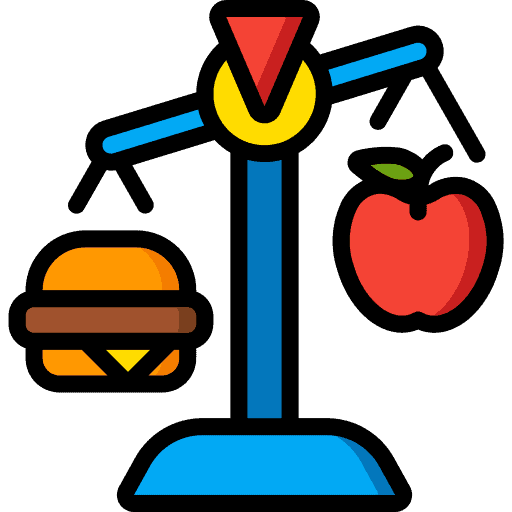
Metabolism, Energy and Calories
When learning how to lose weight, how to slim down, and how to cut properly, there are some basics. Part of understanding weight loss is understanding metabolism, energy, and calories.
Metabolism
Metabolism 11 involves the rate at which your body converts and uses energy. You may see metabolism as your enemy. Fortunately, there are methods for boosting your metabolism.
Skipping meals slows your metabolism. Your body will attempt to store fat as a natural reaction to prevent starving. Muscle burns more calories, so building your muscles will speed up your metabolism. Eating lean protein also burns more calories while you are digesting.
Energy
Another essential form of energy 10 comes from your calories. In this category, you have high energy density and low energy density.
Energy density refers to the calorie levels of your food. High energy density foods contain a large sum of calories in a small amount of food. For instance, eating fatty foods provides a lot of calories in a small portion. These calories are “empty calories.” The reason for this phrase is that these calories do not nourish your body. They leave you feeling hungry again within a couple of hours.
For weight loss, your best option is low energy density foods. You should include hydrating and high-fiber foods such as fruits and vegetables. These foods fill you up and keep you full longer. For weight loss, avoiding fatty foods will have an impact on your progress. Coffee and Tea are always welcome at any time, consider Low Acid Coffee to keep things super healthy.
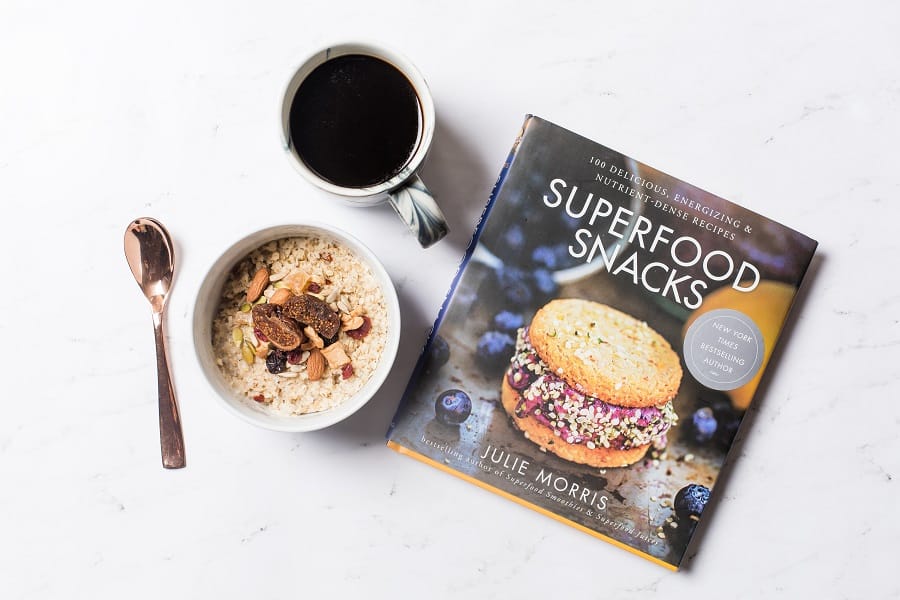
Calories
In a nutshell, calories 13 are a unit measurement of energy. Your body cannot function without adequate calorie intake. You can use calorie calculators 7 to determine how many calories your body needs.
Proteins and carbohydrates provide 4 calories. Fat brings in 9 calories.
For weight loss, the key to calories is to burn off more than you eat. Again, you should stick with foods with low energy density for maximal benefits.

3 Easy Steps to Start Losing Weight
This information may feel overwhelming. Breaking it down into simple steps can start you on the right foot.
Reduce Calories or Carb Intake
The most significant rule of weight loss is to burn more calories than you take in. Combining low-calorie diets 1 with exercise will ramp up your weight loss. Nutritious foods may help with portion control since you will get full faster.
For weight loss, low carb diets have proven effective. After many studies, researchers found that a low carb diet is around 3 times more effective.
Eat Protein, Fat and Low-Carb Vegetables
Your weight loss diet should focus on protein and healthy fats. Since you need to limit carbs, include nutritious low-carb vegetables in your diet.
Some examples of protein sources:
Beef, poultry, fish, pork, and eggs.
Healthy fats include:
Olive oil, coconut oil, avocado, and butter.
Your low-carb vegetables should include items such as:
Broccoli, cauliflower, tomatoes, lettuce, cabbage, Brussels sprouts, and leafy greens.

Do Athletic Training 2-3 Times a Week
If you’re interested in exercising to burn as many calories as possible, try weight lifting. Muscles use a significant amount of calories and ramp up your metabolism. Research shows that pairing weight lifting with a low carb diet is effective for weight loss. Additionally, you gain muscle mass at the same time.
If weight lifting isn’t possible for you, turn to cardio exercises. These exercises include going for a walk 6, running, swimming, and cycling.

11 Extra Helpful Tips
Many factors will impact your weight loss journey. It is 100% possible to take control of some factors.
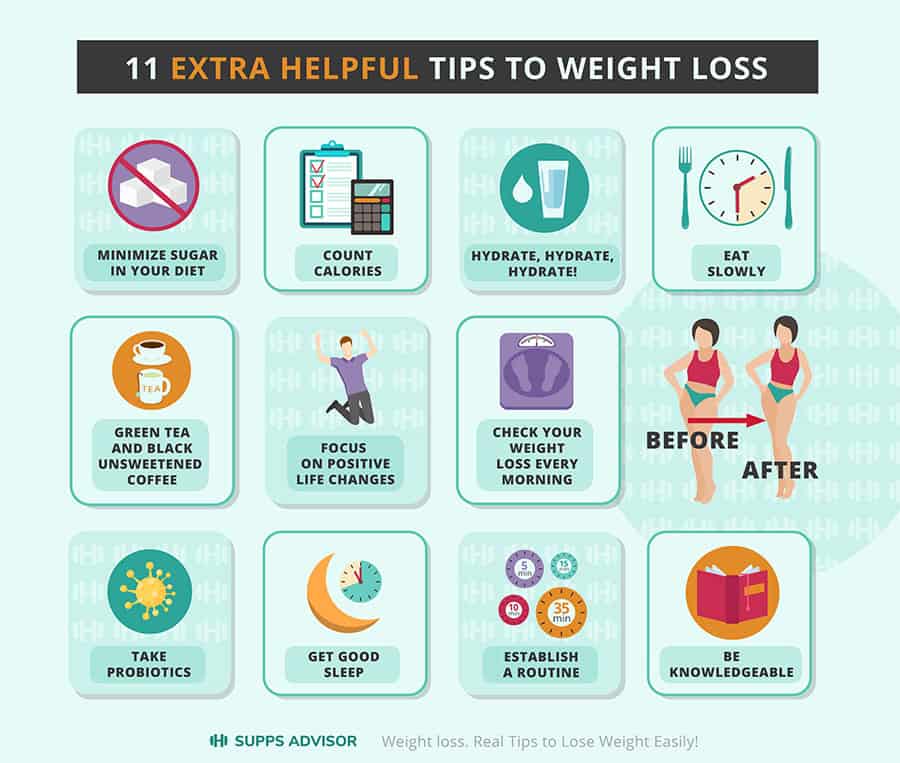
Minimize Sugar in Your Diet
Added sugar creates a wide range of health problems when consumed in excess. These sugars increase your risk of heart disease, diabetes, and cancer.
Sugar presents itself under many different names and sneaks into your diet. You must be careful when choosing food items so that you can watch your sugar intake.
Count Calories
Keeping track of your calories shows you a bigger picture of your overall diet. You can use a food diary or one of the many available apps.
These records of food allow you to assess your intake of good and bad things. From there, you can improve your diet when necessary. Being aware of what you consume is an invaluable tool for weight loss.
Hydrate, Hydrate, Hydrate!
Drinking adequate amounts of water has a wealth of benefits.
Drinking water before a meal reduces calorie intake by filling your stomach. You also replace sugary drinks that can hinder your weight loss.
Drinking approximately 17 ounces of water burns 24-30% more calories for about an hour.

Green Tea and Black Unsweetened Coffee
Green tea burns more fat, especially in the belly. Additionally, green tea may increase the amount of energy expenditure. Energy expenditure is essentially the number of calories your body needs. When you increase expenditure, you burn more calories.
Drinking coffee can boost your energy and fill you up without adding too many calories. Caffeine consumption may also improve your metabolism.
Eat Slowly
Eating slowly makes a surprising impact. When you eat too fast, your body can’t send a signal in time to tell you that it is full. This issue leads to more calorie intake than necessary. People who eat too fast have an increased risk of becoming obese. Train yourself to chew slowly and take your time.
Take Probiotics
Everyone has bacteria in their gut. Controlled amounts of healthy gut bacteria are crucial for digestion. Without proper digestion, your weight loss will slow down. Probiotics contain live bacteria to regulate your gut bacteria levels.

Check Your Weight Loss Every Morning
You can assess your goals better by tracking your progress. Weight fluctuates throughout the day, so stick with a particular time of day. Weighing in the mornings before you eat eliminates fluctuation from food.
Focus on Positive Life Changes
These lifestyle changes shouldn’t be a chore. If you think of diet and exercise as miserable, you are likely to give up. Think of it as a form of self-care. You are nourishing your body and prioritizing your health. This journey is positive and important.
Get Good Sleep
Sleep deprivation interrupts the hormones related to appetite and regulation. A lack of sleep affects your energy during the day. Due to these effects, people who sleep poorly are 55% more likely to become obese.

Establish a Routine
Routines are an essential part of lifestyle changes. Without a routine, you are more likely to stop following your plan and default to old habits. Set a schedule of when to work out, plan your meals and snacks, and stick to your designated routine.
Be Knowledgeable
Don’t follow health and weight loss fads blindly. Any changes you attempt should be backed by valid research. Also, remember that miracle remedies do not exist! There are no shortcuts here. Weight loss comes from dedication, nutrition, and exercise. Also, do not forget to organize and store your food the right way.

How Fast Can Things Change?
The length of time for noticeable changes to appear varies widely. Your adherence to goals and routines makes a significant difference.
For someone following a steady plan, you may see small changes in your body after 2 weeks. By approximately 4 weeks, you may go down in clothing sizes. After the first month, you will feel more established in your routine. Your results will continue to improve as time goes on.
Weight loss and lifestyle changes aren’t easy. Having resources, setting your goals, and following a routine makes it entirely possible.
5 Weight Loss Mistakes
References
- Bunch, D. (2016). Low-Calorie Diets Mean High-Quality Lives, Research Shows. EverydayHealth.com.
- Contributors, W. (2020). Newton’s laws of motion. En.wikipedia.org.
- Frey, M. (2019). How Long Does It Take to See Weight Loss Results?. Verywell Fit.
- Frey, M. (2019). The Huge Benefits of Losing Weight. Verywell Fit.
- Frey, M. (2020). The Huge Benefits of Losing Weight. Verywell Fit.
- Lukas. (2019). Benefits of walking every day: stay fit, happier and more creative – SENSIMISM. SENSIMISM.
- Martinez, K. (2020). Macro Calculations: Easy Way to Lose Weight – Supps Advisor. Supps Advisor.
- Rider, E. (2015). The Reason Vision Boards Work and How to Make One. Huffpost.com.
- Rodriguez, D. (2019). Why Exercise Boosts Mood and Energy | Everyday Health. EverydayHealth.com.
- Staff, M. (2020). The simple math that helps you feel full on fewer calories. Mayo Clinic.
- Thompson Jr, D. (2010). Metabolism and Weight Loss – Weight Center – Everyday Health. EverydayHealth.com.
- Wittwer, J. Printable BMI Chart. Vertex42.com.
- Writer, C. (2019). All About Calories!. Bodybuilding.com.
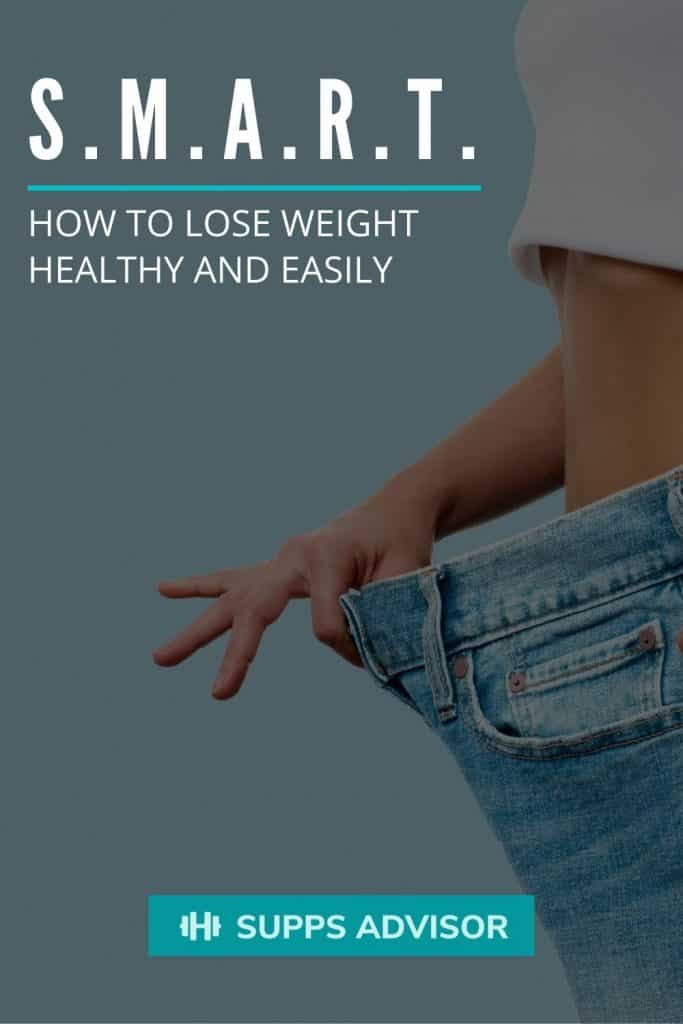
Alex is a former Personal Trainer and the go-to guy when it comes to his blog - SuppsAdvisor.com. Every piece of content is thoroughly checked, rechecked, and then published by Alex!
He is very much into sports activities such as tennis, skiing, surfing and of course working out.
His motto: be active, healthy, and happy!
